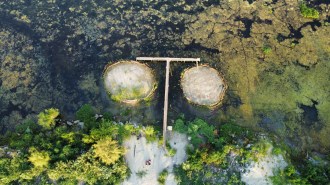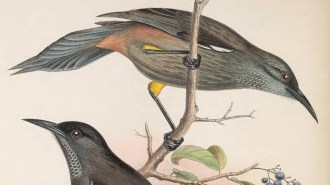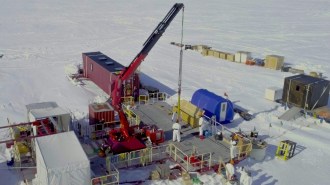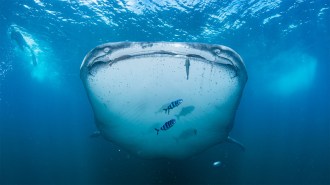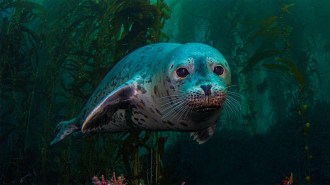Ultimate Sea Weed Loose in America
On June 12, while surveying a private lagoon in San Diego County, biologists ran across a strange, 14-inch-high mat of algae. Not only did it look unlike anything they had seen before, but it had infiltrated, squashed, and killed a 30-by-60-foot patch of 4-foot-high eelgrass.

Rachel Woodfield, part of the research team that made the discovery, sent a specimen to seaweed taxonomist Paul C. Silva of the Jepson Herbarium at the University of California, Berkeley. “I took one look,” he recalls, “and it just screamed, ‘I’m a weed! Get out of my way!'”
Without question, Silva says, “this was the so-called killer alga” that has been progressively smothering the Mediterranean seafloor (SN: 7/4/98, p. 8: http://www.sciencenews.org/sn_arc98/7_4_98/bob1.htm).
Last week, Woodfield, of Merkel and Associates in San Diego, with representatives of many state and federal agencies and an electric utility, confirmed Silva’s conclusion: The alga is a mutant, aquarium-derived clone of the Mediterranean’s Caulerpa taxifolia.
Although the species is native to Florida and Caribbean waters, the lagoon’s variant only vaguely resembles its wild brethren. Native C. taxifolia behaves like shy, runty pantywaists. Its aquarium-derived kin acts like a towering conquistador bullying coastal ecosystems. This rogue Caulerpa is undeterred by low light or chilly temperatures that normally kill the species.
The lagoon’s Caulerpa, whose origins probably trace to the dumped contents of a home aquarium, represents the rogue variant’s only sighting in open waters of the Western Hemisphere, notes James N. Norris of the Smithsonian Institution’s National Museum of Natural History in Washington, D.C.
In this rare case, eradication of the algae may prove possible since “almost everything is breaking our way,” observes Andrew N. Cohen of the San Francisco Estuary Institute in Richmond, Calif., and a member of the newly formed Southern California Caulerpa Action Team. The 10 known patches of algae are small and reside in a part of the mile-long lagoon farthest from the ocean. Also, state officials have shut down recreational water traffic to keep the algae from breaking up and spreading.
Woodfield is currently testing chemical algaecides on buckets of the seaweed. She says that within a few weeks, full-scale eradication efforts may begin. They would probably involve covering Caulerpa patches with tarps and then pumping in chemical poisons.
Elliott A. Norse, president of the Marine Conservation Biology Institute in Redmond, Wash., says he hopes the eradication efforts succeed, because “this is unquestionably a worrisome alien invasion—really scary.” The alga’s ability to survive warm temperate waters, he says, suggests that if it reaches the ocean, it might overtake coastal ecosystems from Northern California down to Peru.
Moreover, in hospitable waters, its expansion can be rapid. Alexandre Meinesz of the University of Nice-Sophia Antipolis in France, who has been mapping this alien’s spread in the Mediterranean, notes that in just 2 years, its coverage appears to have increased by some 50 percent. It now carpets more than 6,000 hectares in a lush shag monoculture of elegant fronds.
Twenty-one months ago, marine scientists petitioned for a U.S. ban on the aquarium variant of C. taxifolia (SN: 11/21/98, p. 332). Prompted by the severity of the threat, federal regulators added this clone to the federal noxious weed list in a record 3 months. The move makes importation or interstate transport of the rogue alga illegal.
A governmental Aquatic Nuisance Species Task Force also commissioned a plan to educate state officials and the public about the clone’s risks and to close any loopholes in rules guiding searches for and quarantining of suspect algae. Too late to help here, a draft of the plan was posted on the Internet one day after the alga’s lagoon sighting was announced.
